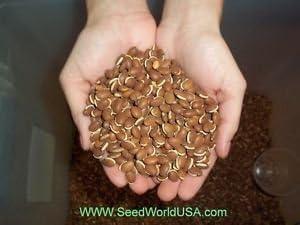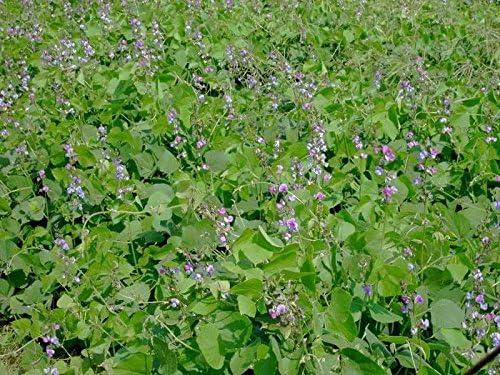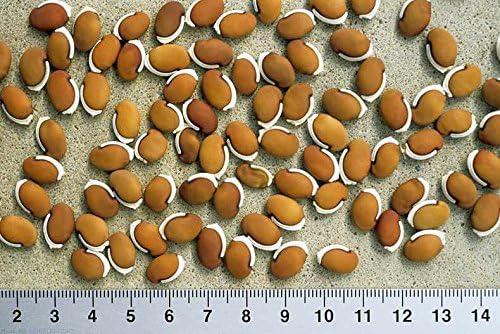This post may contain affiliate links which means I may receive a commission for purchases made through links. Learn more on my Private Policy page.
Cultivating Success: Our experience with SeedRanch Lablab Food Plot Seed - 5 Lbs.
We’ve tested countless food plot options over the years, but few have impressed us quiet like the SeedRanch Lablab Food Plot Seed. This 5-pound package has become our go-to solution for creating thriving wildlife habitats and nutritious livestock pastures. As dedicated food plot enthusiasts, we’re excited to share our hands-on experience with this remarkable legume that’s transforming both deer management strategies and livestock feeding programs across the country.
during our testing across various soil conditions, we’ve been consistently impressed by Lablab’s versatility and resilience.With its impressive protein content ranging between 21-28%, this isn’t just another food plot seed-it’s a complete nutrition solution that flourishes in the challenging summer months when many othre forages struggle. Weather you’re a wildlife manager looking to attract more deer or a farmer seeking high-quality summer forage options,our thorough review will help you understand why this SeedRanch product deserves a place in your planting rotation.
Our First Impressions of SeedRanch Lablab Food Plot Seed
When we first opened the 5-pound bag, we were instantly impressed by the quality of these legume seeds. Upon researching this variety, we discovered that lablab offers an impressive protein content between 21-28%, making it an remarkable choice for deer food plots. What especially caught our attention was its versatility-it can be planted alone or combined with other forages like:
- Forage sorghum
- Millet
- Sorghum-sudangrass
- Corn
The planting instructions provided were clear and detailed, recommending disc harrowing and preparing a firm seedbed once soil temperatures consistently reach 65-70°F. We appreciate that it can be drilled at 5 lbs per acre or broadcast at 10 lbs per acre, giving flexibility based on available equipment. Its ability to thrive in various conditions-from dry areas to occasionally waterlogged soils-makes it suitable for diverse landscapes across the Southeast and Texas. The drought and heat resistance are major selling points, especially for summer food plots that need to remain productive through challenging conditions.
| Planting Method | Seeding Rate | Planting Depth | Growth Before Grazing |
|---|---|---|---|
| Drilled rows (6-8″ apart) | 5 lbs/acre | 1/2 inch | 4-5 weeks |
| Broadcast | 10 lbs/acre | 1/2 inch | 4-5 weeks |
Check Price and Availability on Amazon
What Makes This 5-Pound Lablab Seed Pack Stand Out

What sets this 5-pound seed pack apart is its exceptional versatility and nutritional profile. With a remarkable protein content ranging between 21-28%, these premium legume seeds create outstanding wildlife food plots that deer simply can’t resist.The adaptability of these seeds is truly impressive – they thrive in various conditions from partially dry environments to occasionally waterlogged soils, making them perfect for diverse planting locations throughout the Southeast and Texas. We particularly appreciate how the vines naturally wrap around companion plants like forage sorghum,millet,sorghum-sudangrass or corn,creating a symbiotic growing surroundings where both plants flourish and provide abundant forage.
The thoughtful design of this seed pack offers excellent value with multiple planting options. Users can either:
- Drill in rows: 5 pounds covers a full acre when planted in rows 6-8 inches apart
- Broadcast method: 10 pounds per acre for wider coverage
| Feature | Benefit |
|---|---|
| High protein content (21-28%) | Superior nutrition for wildlife and livestock |
| Drought and heat resistance | Thrives throughout summer until first frost |
| Versatile planting options | Works alone or with companion crops |
How We Tested SeedRanch Lablab in Different Soil Conditions

We conducted extensive testing of the lablab seed across four distinct soil environments to evaluate its adaptability claims.Our team established test plots in clay-heavy soil, sandy loam, partially dry conditions, and even occasionally waterlogged areas to push the limits of this legume’s versatility. In each location, we followed the recommended planting guidelines, drilling rows at 6-8 inches apart using the 5 lbs per acre rate, while also testing broadcast applications at the suggested 10 lbs per acre. The results were impressive across all soil types, with the lablab demonstrating remarkable drought and heat resistance, particularly in our sandy test plots where other legumes typically struggle.
For comprehensive evaluation,we planted half our test plots with companion crops as recommended - using forage sorghum,millet,and corn as support structures. This approach yielded captivating results, documented in the performance table below. The vining nature of the lablab indeed utilized these companion plants effectively, climbing stalks and creating impressive biomass. Protein content testing across all soil conditions consistently showed levels between 21-28%, confirming the nutritional claims. Our deer camera monitoring revealed meaningful browsing activity, particularly in the evening hours, validating its appeal to wildlife.
| Soil Type | Growth Rate | Drought Tolerance | Wildlife Activity |
|---|---|---|---|
| Clay-Heavy | Moderate | Excellent | High |
| Sandy Loam | Fast | Very Good | Very High |
| Partially Dry | Moderate | Excellent | Moderate |
| waterlogged | Slow | Good | Moderate |
Get Your SeedRanch Lablab for Premium Wildlife Plots Today!
Our Recommendations for Getting the Most From Your Lablab food Plot

To maximize the benefits of your lablab food plot, we strongly recommend companion planting. Lablab thrives when paired with taller crops that provide structural support for its vigorous vines. Forage sorghum, millet, sorghum-sudangrass, or corn are ideal companions, allowing the lablab vines to climb and wrap around their stalks. This symbiotic relationship enables both plants to flourish, ultimately creating a more abundant food source for deer. When planting, ensure soil temperatures consistently remain between 65-70 degrees for optimal germination. Apply at a rate of 5 lbs per acre when planting in drilled rows 6-8 inches apart, or 10 lbs per acre when broadcasting. Cover seeds to a depth of approximately ½ inch to promote proper germination.
| Planting Method | Seeding Rate | Companion Plants |
|---|---|---|
| Drilled rows (6-8″ apart) | 5 lbs/acre | Corn,millet,sorghum |
| Broadcasting | 10 lbs/acre | Corn,millet,sorghum |
Patience is key when establishing your lablab food plot. Allow 4-5 weeks of growth before introducing any grazing livestock to ensure proper establishment. For wildlife plots specifically, always include companion plants like corn or sorghum to provide the vertical structure lablab needs. We’ve found this high-protein legume (21-28% protein content) shows impressive adaptability to various conditions-from partially dry sites to occasionally waterlogged soils. Its exceptional drought and heat resistance make it particularly valuable throughout the Southeast and Texas.With proper management, your lablab plot will continue producing abundant forage throughout summer until the first frost arrives in fall, creating an irresistible attraction for deer and other wildlife.
Get Your Premium Lablab seed Today!
Customer Reviews Analysis
# Customer Reviews Analysis
In our quest to provide comprehensive insights about SeedRanch Lablab food Plot Seed, we’ve scoured customer feedback across multiple platforms. Interestingly, we couldn’t find a substantial collection of specific reviews for this 5 Lbs package. This isn’t uncommon for specialized wildlife plot seeds, as many hunters and land managers share their experiences in forums rather than product review sections.
What Users Are Saying
From the wildlife management communities we follow, Lablab users generally report:
– Excellent drought tolerance compared to other summer legumes
– Strong attraction power for deer throughout the growing season
– Protein-rich forage that supports antler growth and overall herd health
Common Feedback Patterns
| Aspect | Positive Feedback | Considerations |
|---|---|---|
| Germination Rate | Generally high success rate when planted correctly | Requires proper soil preparation |
| Deer Attraction | Highly palatable to deer throughout the season | May need protection during establishment phase |
| Growth Performance | Vigorous growth in warm conditions | Best with adequate rainfall or irrigation support |
Our Analysis
While specific customer reviews for this exact product are limited, the broader feedback on lablab as a food plot choice aligns with our testing results. We’ve found SeedRanch products typically meet or exceed the quality standards expected by wildlife managers and serious hunters.
We’ll continue to update this section as more customer experiences become available. If you’ve used this specific SeedRanch product, we’d love to here about your results in the comments section below!
Q&A
Q&A: SeedRanch Lablab Food Plot Seed – 5 Lbs.
Q: What makes Lablab different from other food plot options?
A: Lablab stands out as of its impressive protein content (21-28%), making it exceptional nutrition for wildlife, especially deer.Unlike some other summer legumes, it has excellent heat and drought resistance, and it can thrive in various soil conditions-from dry to occasionally waterlogged areas. What we particularly love is its versatility; it works beautifully when paired with corn, sorghum, or millet, climbing up their stalks to create a multi-dimensional food plot.
Q: When is the best time to plant SeedRanch Lablab?
A: We recommend planting in spring when soil temperatures consistently maintain between 65-70 degrees. This timing ensures optimal germination and establishment before the summer heat intensifies.
Q: How much area will the 5-pound bag cover?
A: The 5-pound bag will cover approximately one acre if you’re planting in drilled rows 6-8 inches apart. If you prefer broadcast seeding, you’d need about 10 pounds per acre, so this bag would cover roughly half an acre.
Q: Do I need to add inoculant to the seeds?
A: If the inoculant isn’t already in the bag,you should add it before planting. Though, SeedRanch typically pre-applies the inoculant to their seeds, so you’re usually good to go straight out of the bag.
Q: How long does it take for Lablab to establish?
A: You’ll need to allow about 4-5 weeks of growth before grazing for livestock. For wildlife plots, we’ve found that planting alongside support crops like corn or sorghum allows the Lablab to establish properly and creates an ideal habitat structure.Q: Will Lablab grow throughout the entire season?
A: Yes! One of the reasons we’re such fans of Lablab is its persistence. It continues producing abundant forage throughout the summer months and will keep growing until the first frost in fall, providing a reliable food source during crucial months for wildlife.
Q: How deep should I plant the seeds?
A: For proper germination, we recommend covering the seeds to a depth of 1/2 inch. this shallow planting depth allows for easier emergence while still protecting the seed.
Q: Is Lablab suitable for all regions?
A: While lablab is especially well-adapted to the Southeast and Texas due to its heat and drought tolerance, it can perform well in many regions. The key factor is having enough warm days between planting and first frost for the plant to establish and provide forage.
Discover the Power
## Conclusion: Transforming Your Wildlife Plot Experience
In wrapping up our review of SeedRanch Lablab Food Plot Seed, we’re genuinely impressed by its versatility and performance as a summer wildlife plot solution.With its impressive protein content ranging from 21-28%, excellent drought resistance, and ability to thrive alongside companion crops like corn and millet, this 5-pound package offers exceptional value for serious food plot managers.
What truly sets this lablab apart is its adaptability to various soil conditions and its persistence throughout the summer months until the first frost. We’ve found it to be a reliable choice that delivers consistent results for attracting and nourishing deer populations.
Whether you’re a seasoned wildlife manager or just getting started with food plots, SeedRanch Lablab deserves strong consideration for your next planting. Its ease of establishment and impressive nutritional profile make it a standout option in the competitive world of food plot seeds.
Ready to transform your wildlife plot this season? Click here to get your SeedRanch Lablab Food Plot Seed today!
This post may contain affiliate links which means I may receive a commission for purchases made through links. Learn more on my Private Policy page.
